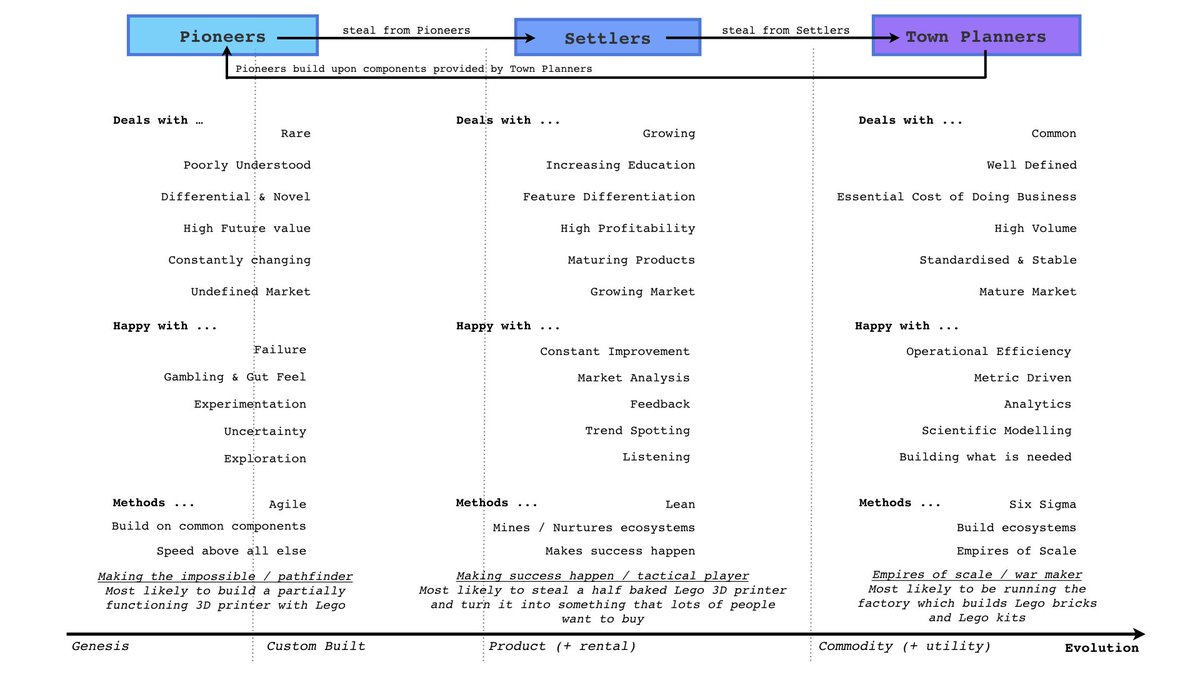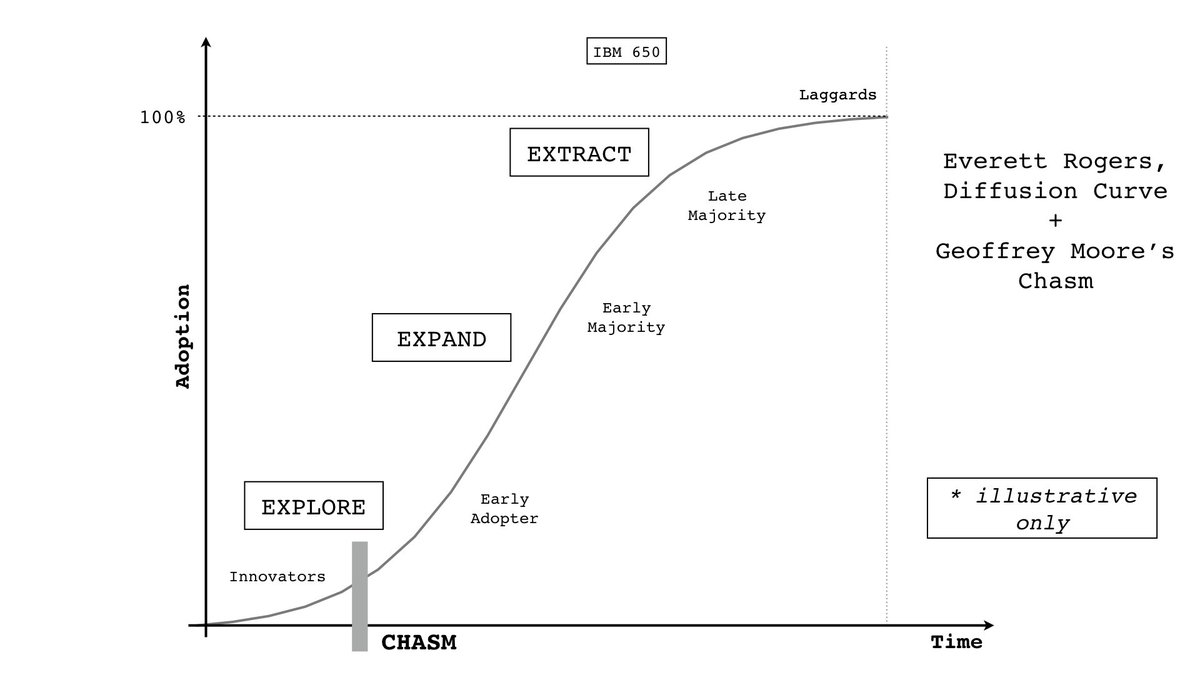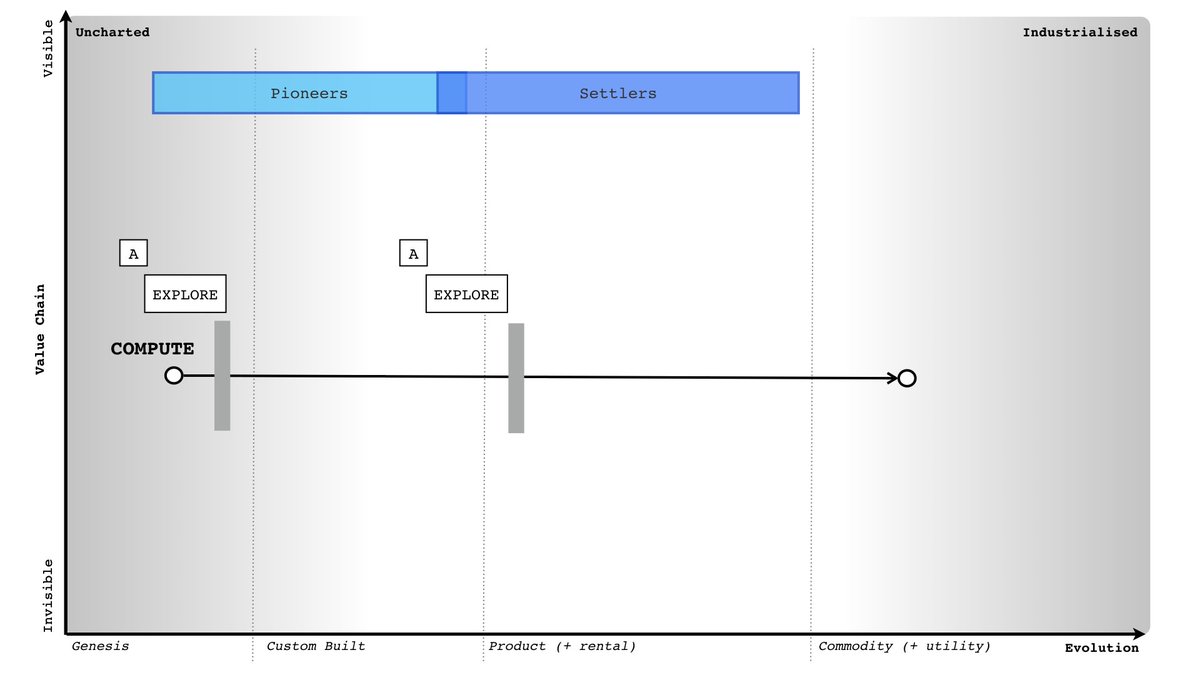Me : In the concept? Yes. Of course there are many sub components and even below electricity provision (which is commodity) there is pioneering going on in generation ... Dyson sphere anyone?
Me : No, but something is.
X : How do you mean?
Me : Ok, first it's worth remembering I stopped research on organisation in 2007 - - because, well you can only research on an organisation you're experimenting on ...
X : And?
Me : And what? I can take a guess, but no more ...

Me : Well, this is a diffusion curve for a product. I'm going to stretch here widely. Let's add @KentBeck 3X's to it because I quite like that idea ... so we've got explore, expand, extract.

Me : I don't run companies these days. But, I would look for artefacts which might occur from this. There is an "obvious" one which means it's almost certainly wrong and therefore makes me think this guess is wide of the mark.
X : What's that?
My general rule of thumb is the obvious solution always turns out to be obviously wrong at some point in the near future. You'd need a lot of experiments to test whether recursive is useful.
Me : It's a guess, that's all. You'll have to experiment to find out.
X : On what?
Me : Your organisation.
X : I'm not happy about that. Can't you research it?
Me : Sure, give me control of your organisation and I'll find out.






















